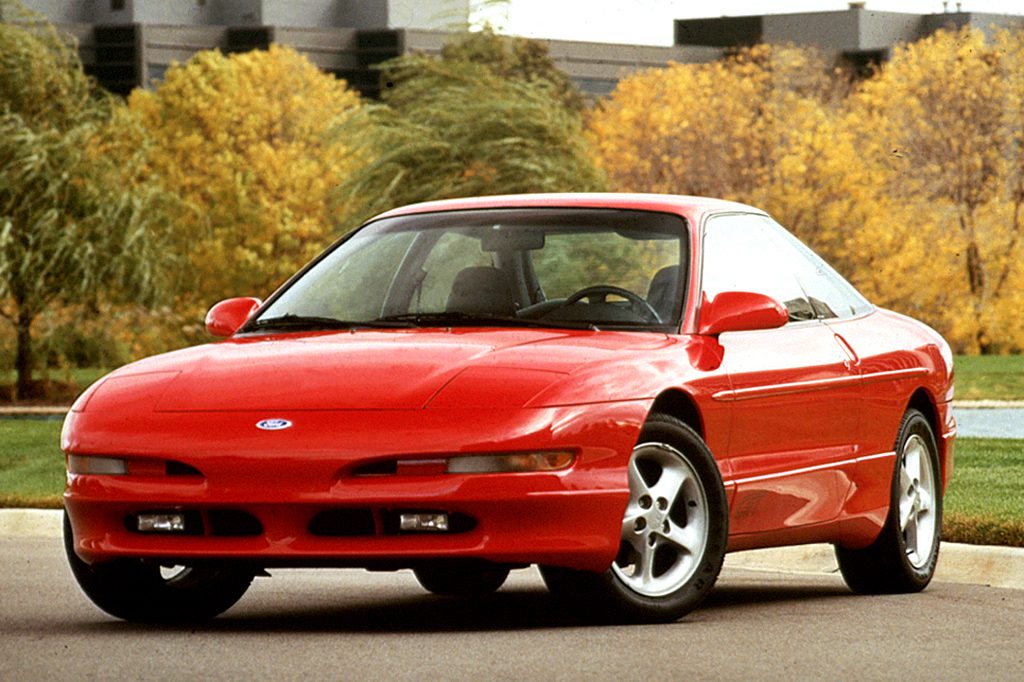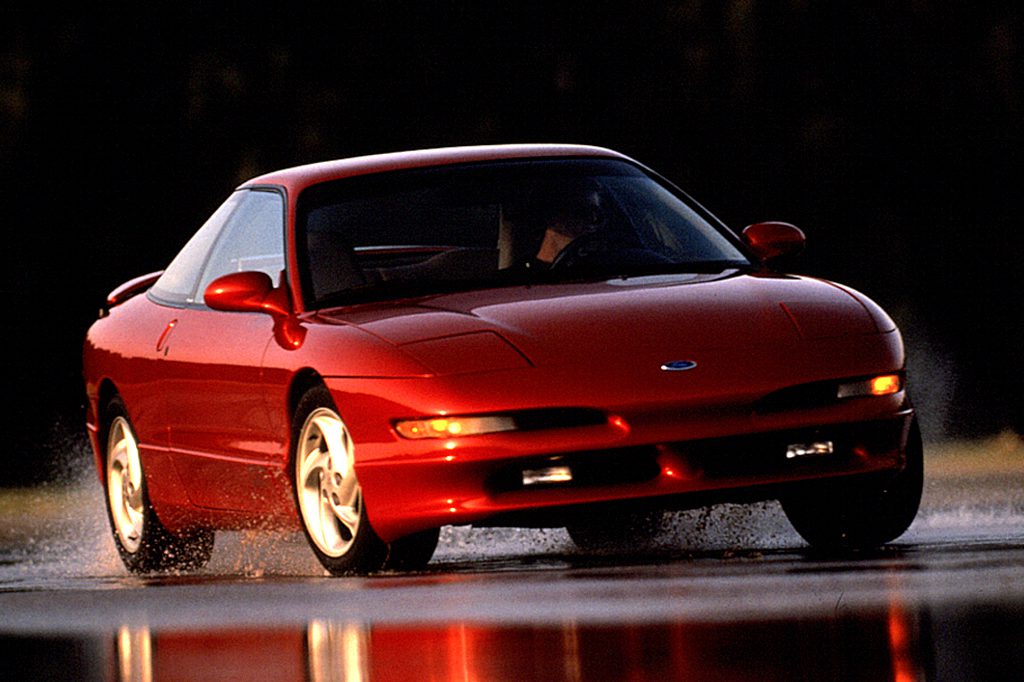| Sporty/performance car; Built in USA |
|
|
| Good condition price range: $1,300 – $2,400* |

1993 Ford Probe GT

1993 Ford Probe GT

1994 Ford Probe GT

1995 Ford Probe GT

1995 Ford Probe GT
| Pros: |
|
| Cons: |
|
Significantly improved over the first (1989-92) generation, the latest Probe delivers plenty of punch and prowess for its price.
Overview
Redesigned for 1993, Ford’s front-drive Probe again emanated from the same Michigan factory as the Mazda MX-6 and shared that car’s chassis components. But each coupe is uniquely styled. Probe is a sleek 2-door hatchback, whereas Mazda’s MX-6 is a 2-door notchback coupe.The Probe’s wheelbase grew by four inches, overall length by two, but interior dimensions changed little. A driver-side airbag was standard. Base Probes carry a twin-cam 4-cylinder engine; GTs, a 2.5-liter V6. All-disc brakes bring the GT to a halt, while base Probes employ rear drums. Antilocking was optional on both models.
Yearly Updates
| 1994 Probe A passenger-side airbag was added for 1994, joining the one on the driver’s side. A Sport Option Package could give the base-model Probe an appearance similar to the more assertive GT coupe. |
| 1995 Probe Except for new taillights, little change was evident on the 1995 Probes. |
| 1996 Probe In response to criticism of the GT’s harsh ride, engineers installed softer struts and springs. |
| 1997 Probe Toward the end of the model year Ford announced the Probe would be dropped for ’98, along with three other slow-selling models. |
